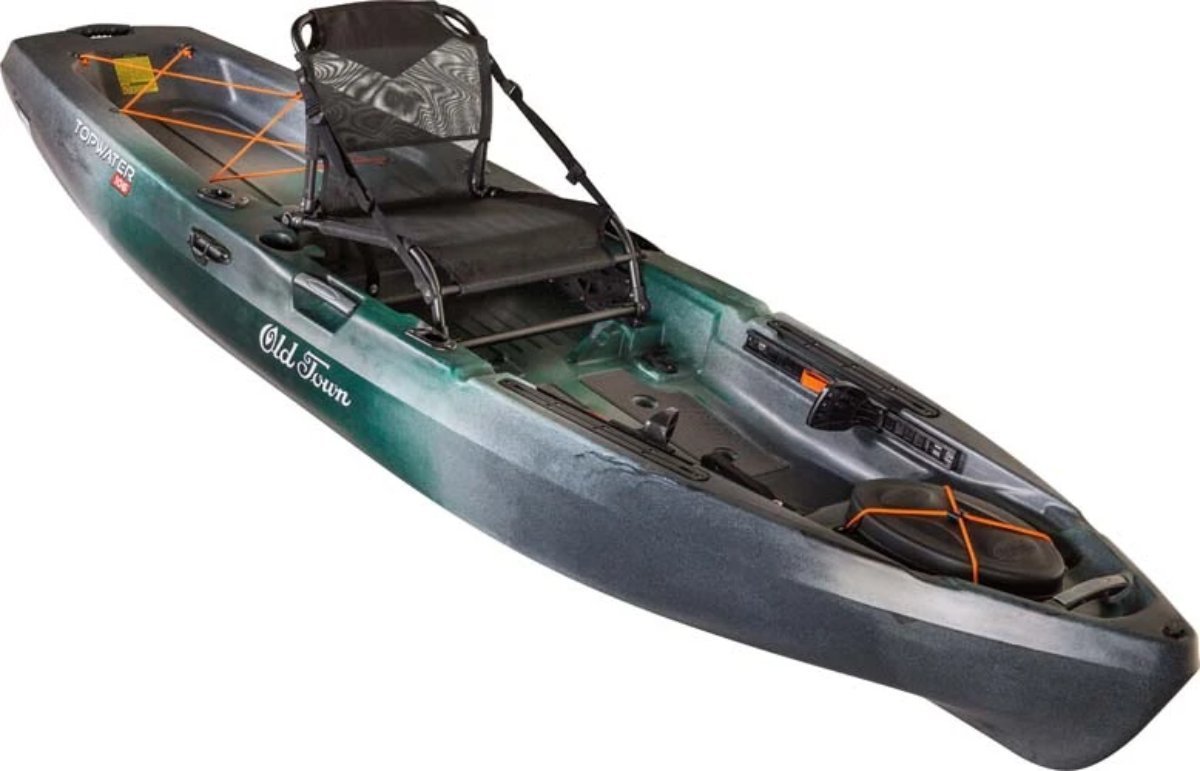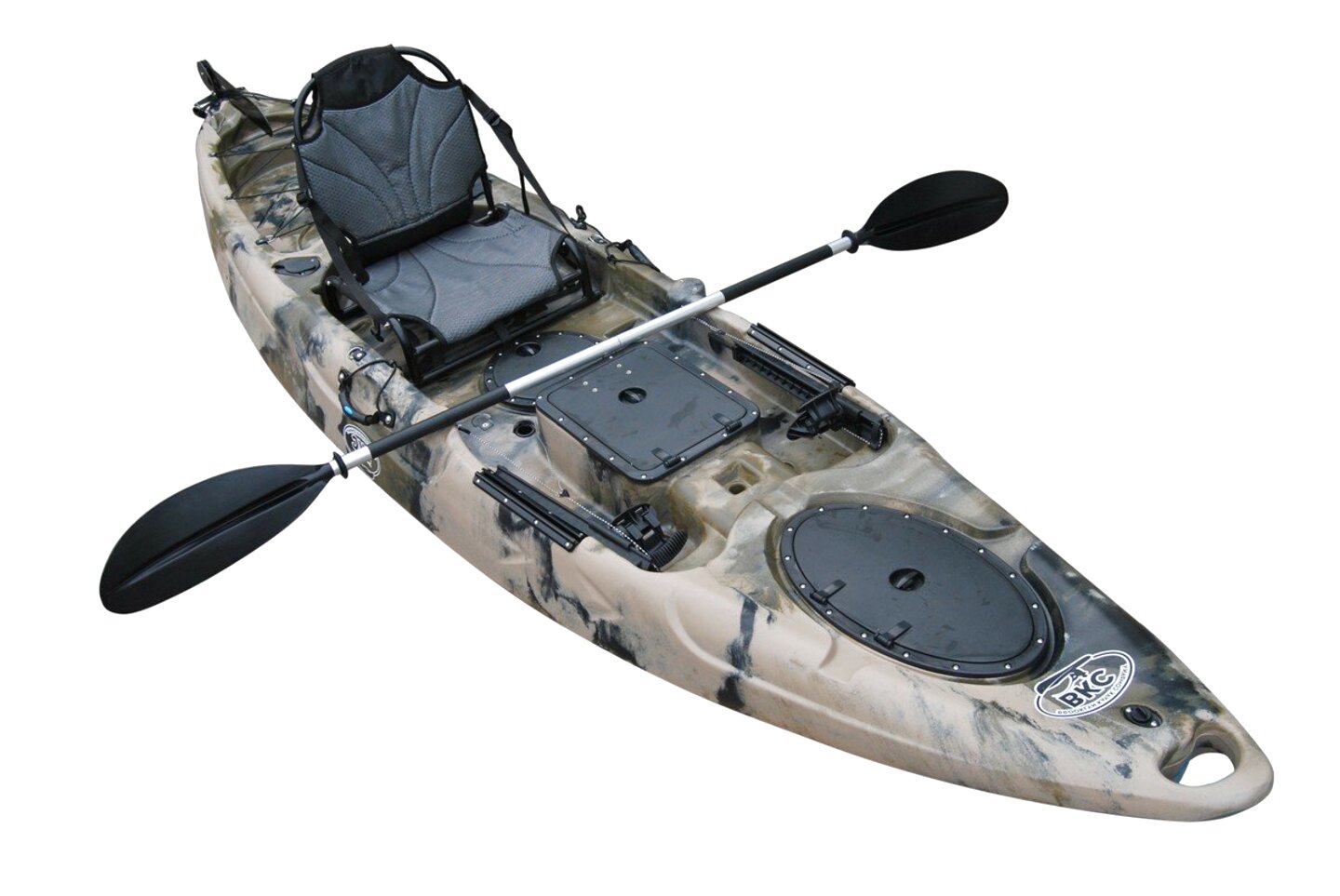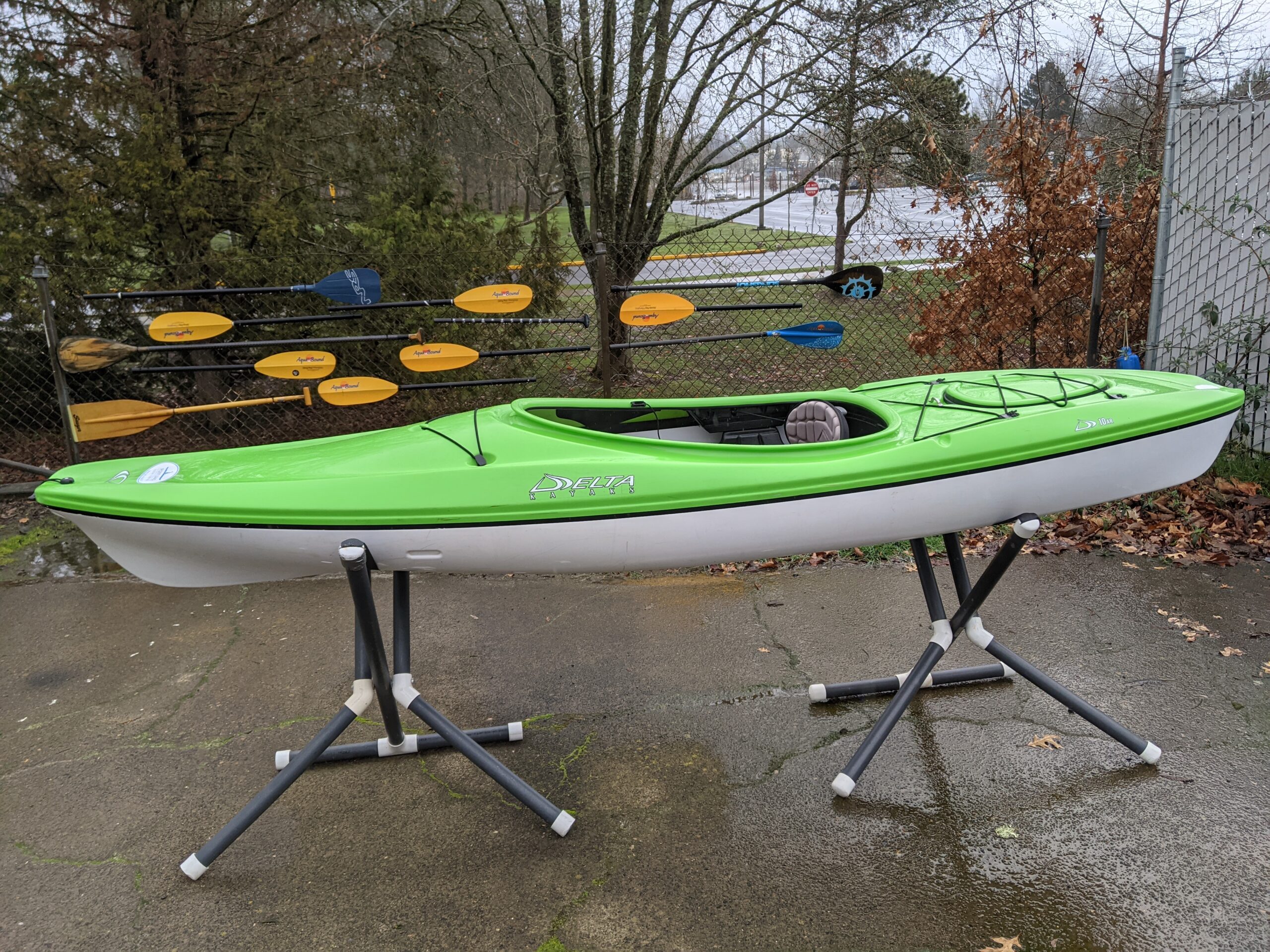Unlock Adventure: Your Guide To Finding The Best Used Fishing Kayaks For Sale
Table of Contents
- Why Opt for Used Fishing Kayaks for Sale?
- What to Look For When Inspecting Used Fishing Kayaks
- Understanding Types of Used Fishing Kayaks
- Where to Find the Best Used Fishing Kayaks
- Pricing and Negotiation Strategies
- Essential Accessories for Your Used Fishing Kayak
- Maintenance Tips for Your Pre-Owned Vessel
- Safety and Legal Considerations
Why Opt for Used Fishing Kayaks for Sale?
The primary motivation for most buyers exploring used fishing kayaks for sale is, undoubtedly, cost savings. A new, fully outfitted fishing kayak can easily run into thousands of dollars, a significant investment for a hobby you might just be starting. By choosing a pre-owned model, you can often acquire a high-quality kayak, sometimes even a premium brand, for a fraction of its original price. This allows you to allocate more of your budget towards essential gear like life vests, paddles, and fishing electronics, enhancing your overall experience without overspending upfront. Beyond the financial benefits, buying used is also an environmentally conscious choice. It extends the life cycle of existing products, reducing demand for new manufacturing and minimizing waste. Furthermore, the used market offers a vast array of models, including those that might no longer be in production but are still highly sought after for their specific features or durability. As reported by the NOAD in a note about the usage of "used," there is sometimes confusion over whether to use the form "used to" or "use to," which has arisen largely because of phonetic similarities. However, in the context of "used fishing kayaks," the meaning is clear: these are vessels that have previously served their purpose and are now ready for a new owner. This concept of extending utility is central to the appeal of the second-hand market.What to Look For When Inspecting Used Fishing Kayaks
When you're considering a used fishing kayak for sale, a thorough inspection is paramount. This isn't just about aesthetics; it's about safety and functionality. You're looking for signs of wear and tear that are acceptable for a pre-owned item versus damage that could compromise the kayak's integrity or performance. Taking your time here will save you headaches and potential costs down the line.Hull Integrity and Structural Soundness
The hull is the heart of the kayak, and its condition is critical. Begin by examining the entire exterior for deep scratches, gouges, or cracks. While superficial scratches are common and usually harmless, deep gouges that penetrate the plastic or fiberglass layers are red flags. Look especially at the bow, stern, and keel (the bottom centerline), as these areas often bear the brunt of impacts. * **Dents and Deformations:** Check for any significant dents or warping, especially on plastic kayaks that might have been stored improperly or exposed to extreme heat. A severely deformed hull can affect tracking and stability on the water. * **Patches and Repairs:** If you find patches or repairs, inquire about them. A professional repair can be perfectly sound, but a shoddy DIY job might indicate underlying issues or future leaks. Ask the seller about the nature of the damage that necessitated the repair and how it was fixed. In other words, will the work delivered on the repair hold up to rigorous use? * **Oil Canning:** This refers to a concave deformation on the bottom of the hull, often due to prolonged storage on uneven surfaces or excessive weight. Minor oil canning might not be an issue, but severe cases can affect performance. * **Scuppers and Drain Plugs:** Ensure all scupper holes (self-draining holes on sit-on-top kayaks) are clear and undamaged. Check that drain plugs are present and seal properly.Hardware, Rigging, and Accessories
Beyond the hull, inspect all the components that make a fishing kayak functional. * **Hatches and Lids:** Open and close all hatches. Do they seal tightly? Are the latches secure? Check for cracks around the rims or missing gaskets, which could lead to water intrusion. * **Seats and Footrests:** Ensure the seat is comfortable and adjustable. Check for tears in the fabric or cracks in the frame. Footrests should be fully functional and easy to adjust. * **Rudders and Pedal Drives:** If the kayak has a rudder system, test its functionality. Is the rudder blade intact? Do the steering cables move smoothly? For pedal drive kayaks, this is a major component. Inspect the drive unit thoroughly for wear on gears, props, or fins. While used for fishing, the pedal drive is an instrument or tool, and its condition is paramount. Ensure it engages and disengages smoothly. * **Rod Holders and Mounts:** Check the condition of all built-in rod holders and accessory mounts. Are they secure? Are there any missing screws or stripped threads? * **Bungees and Deck Lines:** Inspect all bungee cords and deck lines for fraying or excessive stretching. These are easily replaceable but indicate the general level of care the previous owner took.Understanding Types of Used Fishing Kayaks
The market for used fishing kayaks for sale is diverse, reflecting the wide range of designs available new. Understanding the basic types will help you narrow down your search based on your fishing style, preferred waterways, and comfort level. * **Sit-on-Top (SOT) Kayaks:** These are the most popular choice for fishing due to their stability, ease of entry and exit, and open deck space for gear. They are self-bailing, meaning water drains through scupper holes. Many anglers are used to the open feel of an SOT, even if at first, the idea of sitting on top of the water was strange and unusual. * **Sit-Inside (SINK) Kayaks:** While less common for dedicated fishing, some anglers prefer SINKs for their speed, efficiency, and protection from the elements. They offer more storage space inside the hull but can be challenging to re-enter if capsized. * **Pedal Drive Kayaks:** These kayaks utilize a pedal system to propel the boat, leaving your hands free for fishing. They are highly efficient and popular but also significantly more expensive, even on the used market. Inspecting the pedal drive system is crucial, as repairs can be costly. * **Paddle Kayaks:** The traditional choice, these are propelled solely by a paddle. They are generally lighter, simpler, and more affordable. * **Tandem Kayaks:** Designed for two people, these can be great for fishing with a partner or for solo anglers who want extra space and stability. Consider where you'll be fishing most often. A wide, stable SOT is excellent for calm lakes and slow rivers, while a narrower, longer kayak might be better for covering distance on larger bodies of water.Where to Find the Best Used Fishing Kayaks
Finding a good deal on a used fishing kayak for sale requires knowing where to look. The internet has opened up numerous avenues, but local options still offer unique advantages.Online Marketplaces and Forums
* **Facebook Marketplace & Local Buy/Sell Groups:** These are incredibly popular for local sales. You can filter by location and often find good deals from individuals looking to offload gear quickly. Be prepared to act fast on good listings. * **Craigslist:** Still a viable option, though requiring more caution due to scams. Always insist on meeting in a public place and inspecting the item thoroughly before purchase. * **Dedicated Kayak & Fishing Forums/Groups:** Online communities, much like the Stack Exchange network consists of 183 Q&A communities including Stack Overflow, the largest, most trusted online community for developers, exist for kayakers and anglers. These often have "for sale" sections where enthusiasts sell their well-maintained gear. You might find more knowledgeable sellers and buyers here. * **eBay:** Good for finding specific models or accessories, but shipping can be expensive for large items like kayaks. Focus on local pickup options. When dealing with online sellers, communicate clearly. The phrase "whether or not" a deal is good often hinges on the clarity of communication and the honesty of the seller. Ask for multiple photos, detailed descriptions, and be wary of overly vague listings.Local Shops and Community Sales
* **Specialty Kayak & Paddle Shops:** Some shops offer consignment services or have a used section. While prices might be slightly higher than private sales, the kayaks are often inspected and sometimes even warrantied by the shop, offering an added layer of trust. * **Outdoor Gear Consignment Stores:** These stores specialize in selling used outdoor equipment and can be a treasure trove for finding a used fishing kayak. * **Local Fishing Clubs & Organizations:** Many clubs have informal marketplaces or know members looking to sell. This is an excellent way to tap into a knowledgeable community. * **Garage Sales & Estate Sales:** Less common, but you can sometimes stumble upon incredible deals. These require more luck and persistence.Pricing and Negotiation Strategies
Determining a fair price for used fishing kayaks for sale can be tricky. Research is your best friend. Look up the original retail price of the model you're interested in. Then, search online marketplaces for similar models that have recently sold or are currently listed. This will give you a good baseline. Factors influencing price include: * **Age and Condition:** Newer kayaks in excellent condition command higher prices. * **Brand and Model:** Premium brands or highly sought-after fishing-specific models retain their value better. * **Included Accessories:** A kayak sold with a paddle, PFD, anchor, or other fishing gear will naturally be more expensive than a bare hull. * **Market Demand:** Popular models in high demand will sell faster and for closer to asking price. When it comes to negotiation, be polite but firm. Make a reasonable offer, perhaps 10-20% below the asking price, and be prepared to justify it based on any imperfections you noted during your inspection. Don't be afraid to walk away if the price isn't right or if the seller is unwilling to budge on an unreasonable price. Remember, there are always other used fishing kayaks for sale out there.Essential Accessories for Your Used Fishing Kayak
While you're focused on the kayak itself, don't forget the critical accessories that complete your setup. Sometimes, a used fishing kayak for sale might come with some of these, offering even greater value. * **Paddle:** A good quality paddle is essential. Ensure it's the correct length for your height and kayak width. * **Personal Flotation Device (PFD):** This is non-negotiable for safety. Always wear a PFD designed for paddling. * **Anchor System:** Crucial for holding your position in current or wind. * **Rod Holders:** Even if the kayak has built-in holders, you might want additional adjustable ones. * **Storage Solutions:** Dry bags, crates, or tackle boxes to keep your gear organized and dry. * **Transportation Gear:** Roof racks, kayak carts, or trailers for getting your kayak to and from the water. * **Safety Kit:** Whistle, signaling mirror, bilge pump (for SINKs), and a first-aid kit.Maintenance Tips for Your Pre-Owned Vessel
Once you've secured your used fishing kayak for sale, proper maintenance will ensure its longevity and performance. Treat your pre-owned kayak with the same care as a new one. * **Cleaning:** Rinse your kayak thoroughly with fresh water after every use, especially after saltwater excursions. This prevents salt buildup and grime from degrading the hull and hardware. * **Storage:** Store your kayak out of direct sunlight and off the ground. UV rays can degrade plastic over time, making it brittle. Hanging it or storing it on a dedicated rack helps prevent hull deformation (oil canning). As at any given point, the condition of your kayak reflects its storage. You might say transactions as of purchase, but balance as at the time of inspection. * **Hardware Inspection:** Regularly check all screws, bolts, and rivets. Tighten anything loose and replace corroded fasteners. Lubricate moving parts like rudder cables or pedal drive components. * **Minor Repairs:** Learn how to perform minor repairs, such as patching small holes or replacing worn bungee cords. Many resources are available online. * **Winterization:** If you live in a cold climate, prepare your kayak for winter storage by thoroughly cleaning it, removing all accessories, and storing it in a cool, dry place.Safety and Legal Considerations
Your safety on the water should always be your top priority. Before you even launch your newly acquired used fishing kayak, ensure you're prepared. * **Learn to Paddle:** If you're new to kayaking, take a basic paddling course. Understand how to steer, stop, and, most importantly, how to re-enter your kayak if you capsize. * **Weather Awareness:** Always check the weather forecast before heading out. Avoid strong winds, storms, and excessive currents. * **Know Your Limits:** Don't venture into conditions beyond your skill level. * **Boating Regulations:** Familiarize yourself with local and state boating regulations. This includes requirements for PFDs, lights (if paddling after sunset), and registration. Some states require kayaks to be registered, even if they are human-powered. * **Tell Someone Your Plan:** Always let someone know where you're going and when you expect to return. * **Pack for Emergencies:** Carry a dry bag with essential items like a phone, first-aid kit, whistle, and extra layers of clothing. ***Conclusion
Diving into the world of kayak fishing doesn't have to be an expensive endeavor, thanks to the robust market for used fishing kayaks for sale. By understanding what to look for during inspection, knowing where to search, and employing smart negotiation tactics, you can find a high-quality, pre-owned vessel that perfectly suits your needs and budget. Remember, the key to a successful purchase lies in thorough research, careful inspection, and a commitment to safety on the water. So, are you ready to cast your line from the deck of your own affordable fishing kayak? The adventure awaits! Share your experiences or ask any questions in the comments below – we'd love to hear about your journey to finding the perfect used fishing kayak. Don't forget to share this guide with fellow aspiring anglers who might be looking for their next great deal!
Old Town Topwater 106 Advanced Standing Fishing Kayak for sale from

Fishing Kayak for sale in UK | 76 used Fishing Kayaks

Used Kayaks – Portland Kayak Company